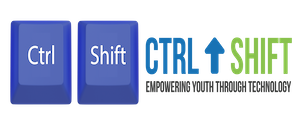Ctrl Shift was founded to address a reality I witnessed growing up and later confirmed through years of professional and community leadership: the digital divide is not just about access to computers, it’s about access to opportunity. In underserved neighborhoods across Chicago, too many students are left behind because they lack the same technology education and mentorship available in wealthier suburban schools. Ctrl Shift was born out of a simple belief — that every young person deserves the chance to develop the skills, confidence, and vision to thrive in the digital future.
Founder's Story
My name is Luis Cruz, and I’ve spent my career at the intersection of technology, leadership, and community. After earning a degree in Computer Engineering and building a career leading enterprise software implementations, I recognized that my professional success was tied not only to technical skills, but to the mentors and opportunities I had along the way.That recognition inspired me to dedicate much of my life to community service and nonprofit leadership. Over the years, I’ve served on boards for organizations like the Boys & Girls Club of Chicago, ALPFA, ChicagoToyDrive.org, Omega Delta National Fraternity and St. Jude’s Hispanic Advisory Board, always focusing on bringing resources, strategy, mentorship, fundraising and technology into spaces that needed them most.
These experiences taught me two important lessons: first, that underserved communities don’t lack talent they lack access; and second, that grassroots leadership creates lasting change. Ctrl Shift embodies both lessons. It isn’t a top-down initiative created in a boardroom. It’s a community response shaped by parents, students, and educators who voiced the need for real, hands-on technology education in Chicago’s inner city.
